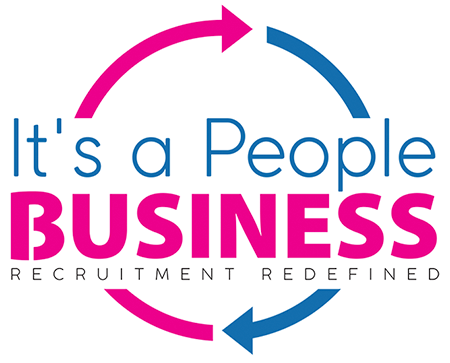
In today's competitive job market, employers are facing a unique challenge when it comes to the art of talent acquisition. To stay ahead of the competition, employers must be more strategic and creative in their recruiting efforts. They must also be willing to step outside of their comfort zone, in order to attract the most qualified and diverse candidates. This blog post will explore the best strategies for recruiters to use when looking to acquire top talent in a highly competitive job market. We will discuss what recruiters should be focusing on during their search, as well as which tactics and tools they should be utilising in order to stand out from the crowd. Finally, we will look at how technology can be leveraged to make the recruitment process more efficient and effective. By the end of this blog post, you will have the knowledge and resources you need to successfully recruit the best talent and build a strong, diverse team.
1. Understanding Your Target Audience
1. Understanding Your Target Audience

Knowing your Target Audience is one of the most important aspects of successful talent acquisition. Having a clear understanding of the kinds of people you are looking for will help you identify and attract the right people to your organisation. Before beginning any recruitment efforts, you should consider the job market and analyse what skills, qualifications, and experiences are necessary for the role. You should also consider the specific company culture and how potential employees would fit into that. Additionally, you should consider the demographics of the area and the types of people that would be available to fill the job. Understanding your target audience will help you create a successful recruitment strategy.
2. Crafting a Compelling Job Description

Crafting a compelling job description is an important part of the talent acquisition process. A well-written job description will not only attract the right candidates, but also communicate a clear vision of the role to potential applicants. A good job description should accurately and succinctly state the job title, responsibilities, skills, qualifications and any other requirements. It should be clear and concise, as well as informative and engaging. It should also include a summary of the company and its culture, as well as details on how to apply for the position. Finally, it should outline any available benefits and the necessary steps to apply for the job. All of these elements combine to give potential applicants an accurate and attractive picture of the job and the company.
3. Utilising Recruiting Platforms
3. Utilising Recruiting Platforms
One of the most effective ways to find the best talent in a competitive job market is by utilising recruiting platforms. With access to a wide range of job seekers, employers are able to find a variety of talented individuals who may not have been exposed to their job postings. Recruiting platforms, such as LinkedIn, also offer a great way to reach passive job seekers who may not be actively searching for a new job. In addition, these platforms are a great way to leverage social media networks to connect with potential candidates. By utilising recruiting platforms, employers can gain exposure to a wider range of potential talent and increase their recruiting success rate.
Read More: Navigating the UK Job Market: Insights and Strategies
4. Leveraging Referral Programs
4. Leveraging Referral Programs

Referral programs are a powerful tool for recruiting candidates. By leveraging the power of your current employees and their networks, you can quickly source new talent. Referral programs also allow you to set expectations and rewards for your employees when they recommend candidates, providing them with an incentive to do a good job. Additionally, referral programs can reduce the cost of recruiting, as well as the time it takes to fill positions. However, you should ensure that your referral program is designed properly and closely monitored to ensure its success.
5. Employing Social-Media
5. Employing Social-Media

Social media has become an essential part of modern recruitment, as it allows employers to gain a better understanding of potential candidates and their qualifications. Employers should be mindful to post job openings on their company’s social media platforms and other job boards to maximise their reach. Additionally, building relationships with potential candidates through social media can be used to establish a base of qualified potential hires. Employers can also use social media to learn more about candidates by looking through their profiles and posts before inviting them to an interview. This can give employers insight into the candidate’s qualifications, as well as their personality and values.
6. Evaluating Applicants
6. Evaluating Applicants
Evaluating applicants is the critical step in the talent acquisition process. This is where recruiters and hiring managers decide which applicants they want to invite to the next round of interviews. Evaluating applicants requires careful consideration of their skills, experience, and fit with the job opening. It also requires a thorough review of the applicant’s resume, cover letter, and other additional documents they may have included in their application. The team should also take into account the applicant’s references, any online presence they may have, and any tests they may have taken. Once the team has evaluated the applicants and identified the best candidates, they can move on to the next step in the talent acquisition process.
7. Conducting Interviews
7. Conducting Interviews

Conducting interviews properly is the key to finding the right candidate for the job. Interviews should be tailored to the specific role, and the questions should focus on the applicant’s skills, experience, and background. Candidates should be asked to provide concrete examples of their work, and relevant stories should be explored in-depth. It’s also important to ask open-ended questions to get a better sense of the candidate’s personality and motivation. Finally, be sure to give the applicant a chance to ask questions about the role and the company. This will give you additional insight into the candidate’s interest and motivation.
8. Making a Job Offer
8. Making a Job Offer
When you’ve found the ideal candidate and they’ve accepted your job offer, it’s time to make it official. Preparation is key when making a job offer – there are a number of things to consider before you send the offer letter. Most job offers include information such as salary, benefits package, job title, job description, start date, and any other important details regarding the position. It’s also important to make sure that the candidate understands their rights and responsibilities, as well as any policies or procedures for accepting and declining the offer. Finally, be sure to communicate the offer in a timely manner, and provide the candidate with an opportunity to ask questions.
In conclusion, talent acquisition is an art that requires skill, knowledge and the right recruiting strategies. It is a process that can be daunting and overwhelming, especially in a competitive job market. However, when done correctly, it can be a powerful tool to bring the best talent to an organisation, helping to ensure its success. Talent acquisition is not a one-time event; it is an ongoing endeavour that requires time, effort, and dedication. With the right strategies and resources, any organisation can create an effective talent acquisition process to ensure its future.
